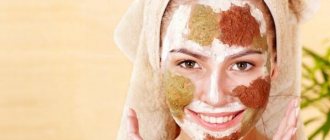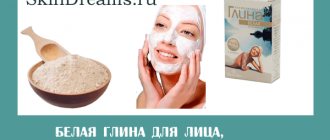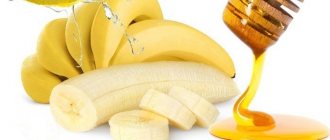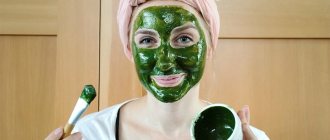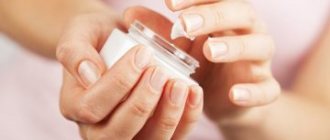A variety of face masks made from gray clay that you can make yourself are not among the most common. How can such “injustice” be explained? First of all, the low prevalence of this ingredient in the pharmacy chain, because finding a bag of gray clay (as opposed to white or blue) is not so easy. Another problem, which is the main one for many domestic women, is the considerable cost. But if you are looking for a truly effective component for preparing a mask, are willing to put up with some expenses and like to experiment, your efforts will be rewarded. After all, facial products made from gray clay are an inexhaustible source of youth and health!
Such different clay
Clay is a rock with a fine-grained structure. It is formed during the destruction of rocks and, in combination with water, takes the form of a dough-like mass. The wide popularity of this product in the cosmetology field is due to its rich composition. Varieties of this product differ in the predominance of certain elements. The two most common varieties are blue and white.
It is worth taking a closer look at all the types used in cosmetology.
Black clay
This product contains many useful substances: Fe, Mg, K, Sr. Great for reducing and cleaning pores. Black clay also normalizes the functioning of skin cells. It is used not only for preparing masks, but also for eliminating cellulite and excess fat.
White
It is characterized by a powdery consistency. The color appears a little yellowish or gray. Great for combination and oily skin . The mixture absorbs excess subcutaneous sebum into its structure, cleanses and reduces pores.
The white variety can not only dry out, but also tighten the skin. However, you should remember that it is prohibited to use it if you have rosacea.
Which facial clay is the most effective? During the selection process, you should pay attention to the color of the product. It is generally accepted that the most effective product should have a dark shade. Among other things, the white type of product helps fight dandruff and make hair stronger and thicker.
Blue
Used to clean and disinfect the epidermis. The composition is saturated with phosphates, N, Fe, Ra, K and Mg. The blue mixture improves blood circulation and metabolic processes . In addition, this product is characterized by a healing effect and helps get rid of skin inflammation. This type of clay prevents the occurrence of acne, partially removes pigmentation and expression lines, and is often used to accelerate the growth and improve the condition of hair follicles.
Yellow and green
This type of clay allows you to cope with acne. Its use helps get rid of toxins and waste. Masks based on the yellow mass saturate the skin with oxygen and improve its color. In addition, the product is very effective in getting rid of the signs of cellulite. Such products are especially useful for unhealthy complexions and when signs of age-related skin changes appear.
Green clay contains many useful minerals. This is an extremely effective option for oily skin types, especially in combination with blue or white clay, has a bactericidal effect and helps to reduce pores, get rid of sebaceous shine and restore the water balance in skin cells.
Red, pink and blue
The red mixture contains a lot of copper and iron oxides. Great for people whose bodies are deficient in iron. Red clay also helps to soothe problematic skin, eliminate flaking and itching. In addition, this is an excellent solution for combating oily seborrhea.
The pink mass is considered a universal remedy. After using it, the skin is cleansed, tightened and receives the necessary nutrition. With this product you can get rid of small wrinkles.
The blue mixture normalizes metabolism in skin cells, whitens and rejuvenates the skin.
Anti-wrinkle clay – how effective?
Clay masks dry out the skin well, removing oily shine from the face
Clay, or kaolin, is used primarily to cleanse the skin of the face. Anti-wrinkle clay is used much less frequently, since this product does not have smoothing properties. However, this does not mean that clay is not suitable for women over 40. On the contrary, it rejuvenates the skin and helps maintain youth.
Clay does not really smooth out wrinkles, but has a pronounced lifting effect, thereby improving the elasticity of the skin and emphasizing the oval of the face. And if you use it to prepare masks with other ingredients, you can achieve the effect of smoothing out wrinkles.
Benefits of using clay for facial wrinkles:
- effectively cleanses the skin;
- eliminates fat;
- improves complexion by expanding capillaries;
- increases the elasticity of the epidermis;
- helps to form a clear oval face;
- hides pores;
- nourishes and moisturizes;
- saturates with useful minerals.
The cosmetic product has a good mineral composition. Clay contains large amounts of magnesium and copper. These components improve metabolic processes in the skin, stimulate blood flow, thereby tightening the skin and making it more elastic, and also stimulate the synthesis of collagen fibers, which helps preserve youth for a long time. In addition, clay masks saturate the skin with essential minerals, even out the complexion and enhance the effectiveness of other cosmetics.
Conclusion: anti-wrinkle clay can and should be used, but you shouldn’t expect an instant smoothing effect. The effect appears only with regular use of natural cosmetics.
Anti acne
In order to say goodbye to acne once and for all, it is best to use a combination of blue and white clay. Black clay also copes well with this problem The skin is cleansed, which is an excellent prevention.
These products dry out oily skin, eliminating inflammation from the pimple that appears. They also stabilize metabolic processes. After the pimples disappear, small spots may remain behind them, which can be whitened using the same clay. If you have large pimples, it is better to prefer the blue mixture.
It should be remembered that before preparing any clay masks, the product must be thoroughly sifted. The facial skin must be thoroughly cleansed before the procedure. For this purpose, you can use a soft scrub. The mask should be kept for twenty to thirty minutes, then rinsed off with plain water without soap and wiped the skin with wet wipes.
Red clay for body skin
Clay helps remove toxins and normalize blood circulation. Cosmetologists recommend adding 100 grams of product to the bath.
Red clay is often used for wrapping. Here is one way to prepare a composition for wrapping: mix the substance with cinnamon and honey, apply the mixture to the body, and after 20–30 minutes, rinse with warm water.
By adding vitamin E to red clay, the product can be used for massage as an effective remedy for cellulite.
Basic Recipes
- Take 5 g of bodyagi and 15 g of blue clay, add 15 g of water to them and stir the mixture until a homogeneous consistency is obtained.
- To prepare a mask with the addition of cucumber juice, take a small spoon of vegetable juice and mix it with a spoon of water. Then add 30 g of blue clay and a few drops of lemon juice. Mix the mask.
- Mix grape juice, a small amount of honey and white clay.
- Dissolve a few rock salt crystals in water. Add green, blue or white clay to the solution.
- To get rid of acne, mix water with blue clay and add one pinch of cinnamon.
The use of such masks is recommended no more than twice a week.
If you begin to experience any negative reactions of the body in the form of itching, peeling or redness, then you need to add a small amount of natural oil to the mask, and finish the procedure by applying a cream with a nourishing effect.
TOP 6 rules for using clay for cosmetic purposes
Before we move on to specific recipes or products, it is worth remembering some rules for using green clay.
They are quite simple:
- Green clay should not be applied to the skin around the eyes - it pulls the skin too much, and the eyelid area is taboo in this case due to its thinness and tenderness.
- To ensure that clay does not cause allergies, it should be used in its pure form without adding any elements or agents. The safest is considered to be simple powdered clay, diluted with mineral or ordinary water.
- Clay masks or wraps should be done while lying down. This is again justified by the fact that clay strongly pulls the skin.
- The mixture for a mask or wrap must certainly be freshly made. Do not use a mixture that has already stood for a long time. Unless, of course, this is a purchased finished product.
- Masks should only be applied to clean facial skin. Otherwise, the expected effect will not be achieved.
- There are no contraindications to the use of green clay, however, if you have very noticeable vascular networks and your skin is particularly thin, you should first consult a dermatologist.
As for general recommendations, those with oily facial skin can use masks once every 3-4 days. If the skin is normal, one application per week will be enough. For those with dry skin, it is better to use green clay no more than once every 10 days.
Leave the masks on until they dry completely - for 5-20 minutes.
After applying the mask you should lie down
Benefits of clay masks
Using clay helps:
- Remove toxins and toxic substances from the skin.
- Provide adequate nutrition to the skin.
- Ensure normal blood circulation.
- Nourish skin cells with oxygen.
- Stabilize metabolic processes.
These problems can be solved using clay masks. In addition, the clay contains silicon oxide, which stimulates collagen synthesis, which has a beneficial effect on the overall tone of the skin.
Due to its rich composition, red, green, blue and white masses are more suitable for getting rid of wrinkles. In order to achieve maximum results, you can combine several varieties at once.
Healing properties of red clay
Due to the mass of beneficial properties, red clay has received a wide range of applications:
- used as an antibacterial agent;
- helps relieve inflammation;
- treats sore throat, asthma, sinusitis;
- helps strengthen the spine;
- eliminates pain from radiculitis;
- has a beneficial effect on the functioning of the heart and joints;
- restores blood microcirculation;
- suitable for the prevention and treatment of hypotension;
- good for getting rid of toothaches;
- normalizes the functioning of sweat glands;
- removes toxins;
- effective for the prevention of varicose veins;
- heals wounds, resolves scars;
- treats skin diseases, relieves redness;
- moisturizes the epidermis, tones, eliminates excess oil and dead cells, improves complexion;
- slows down skin aging processes;
- fights cellulite;
- prevents hair loss, improving its overall condition.
Useful tips
Clay for the skin can be extremely beneficial. If the skin is not overly sensitive, then you can use almost any product. For cleaning, it is better to prefer white, blue and green clay.
If you have sensitive and delicate skin, it is better to use red and pink clay. The red product is most suitable for pale skin.
When using this or that product, regularity is important. Therefore, masks should be done at least once a week.
For skin care, you don’t need to limit yourself to clay masks; it is also advisable to use high-quality creams.
It is necessary to adjust your diet, supplementing it with vitamins and beneficial microelements. Do not overuse products and masks with whitening and drying effects.
Therapeutic effect
The most obvious advantage of gray clay is its pronounced rejuvenating effect. This is not the most famous and sought-after anti-age ingredient, but in skillful hands it works wonders! However, face masks made from gray clay have many other undoubted advantages.
Cosmetic effect:
- rapid regeneration of epidermal cells,
- getting rid of the first age wrinkles,
- moisturizing, toning and nourishing effect,
- treatment of the inflammatory process,
- cleaning contaminated pores and narrowing them,
- removal of dead cells from the face,
- camouflage freckles and age spots,
- getting rid of peeling,
- increasing the elasticity of small vessels,
- normalization of metabolic processes,
- treatment of acne, blackheads and pimples.
Advantages of gray clay masks:
- suitable for dry, sensitive and aging skin,
- have virtually no contraindications or side effects,
- do not require significant investment of time and money.
Alternative uses:
- lotions on elbows and heels,
- hand baths,
- hair masks.
Precautionary measures
Using clay masks more than twice a week can cause serious harm to your skin. There are some contraindications to the use of such products:
- Do not use clay masks if you have an allergic reaction to a particular ingredient.
- Do not apply the product to the skin of the lips and the area around the eyes.
- There should be no pain during the process of removing the mask.
- It is advisable to carry out the procedure in a supine position.
The mask can be supplemented with other ingredients with different properties. A great option is to use herbal infusions instead of water. As for which clay is best for the face, there is no definite answer, since everything depends on the individual characteristics of the body.
How to use green clay for face and hair: proven recipes
Making a mask from green clay is a simple task. However, you should follow certain step-by-step instructions.
| Steps | Description |
| Step 1. Prepare ingredients and utensils. | To make a simple clay mask, you will need water and powdered clay, as well as a utensil. It, which is especially important, should not be metal, otherwise trace elements will provoke a chemical reaction. |
| Step 2: Heat the water. | Ideally, the water temperature for preparing the mask should be at 40°C. It is not recommended to use cold or hot water. |
| Step 3. Knead the mixture. | To obtain the desired consistency, you should use powder and water in a 1:1 ratio. The resulting consistency of the mask should be like thick sour cream. |
After receiving the mixture, apply it to the face or problem areas and wait for it to dry. After this, you should wash your face with warm water.
If your skin is too dry and tight, you can use thermal water to slightly relieve the feeling of tightness while wearing a mask on your face.
A simple recipe consisting of clay and water is universal and suitable for solving any skin problem. However, there are other, sometimes more effective, recipes.
Recipe 1. For acne
If your facial skin is overly problematic, you should try to enhance the effect of a simple mask. This can be done using clay, oatmeal and water.
Mix clay and flour in a 2:1 ratio, and dilute the mixture with water. Then use as described above.
If you want to simplify the recipe, then prepare a chamomile decoction and use it together with clay to dilute the mixture. Do not use water at all. Only green powder and chamomile decoction.
Recipe 2. For the treatment of blackheads and acne
If the main problem is acne, you need to act as follows:
- Prepare 2 tbsp. l. clay, one yolk, half a teaspoon of soda and 2 tbsp. l. water.
- Mix the ingredients.
- Apply to face, wait until dry, and wash.
Recipe 3. To relieve inflammation and redness
To improve complexion, it is customary to use clay in combination with chamomile decoction (it has a tonic effect) and olive oil - it softens and soothes the skin.
To prepare the mask according to the recipe, use 3 teaspoons of clay, a teaspoon of chamomile decoction and the same amount of olive oil.
Recipe 4. For dry skin
If you want to tighten your skin, but not dry it out with clay, prepare a regular mask of clay and water, and add a little olive and almond oil.
Recipe 5. Rejuvenating
To tighten the oval of your face and remove fine wrinkles, prepare:
- Ripe banana.
- 2 tablespoons of sour cream.
- 1 tablespoon honey.
- 1 tablespoon clay.
First, mash the banana with a fork, then mix it with the rest of the ingredients and apply it to your face.
Leave the mask on for 30 minutes, then wash.
Recipe 6. For hair growth
A green clay mask consisting of powder, yolk and mineral water will help stimulate hair growth.
Achieve the consistency of sour cream and apply to the scalp for 20 minutes. Then wash your hair with mild shampoo.
Recipe 7. For dandruff
You can get rid of dandruff with the help of budget clay and without the use of expensive shampoos. To do this, mix clay with water and add a tablespoon of almond oil. As a supplement, a few drops of thyme and lemon essential oils will come in handy.
Apply the mixture to the scalp for 20-30 minutes, then wash your hair.
Indications for use
Red clay is used for the following indications:
- varicose veins;
- hypotension;
- endocrine pathologies;
- depression, increased fatigue;
- seborrhea;
- dermatological diseases.
In cosmetology, the product is indispensable for caring for problematic, sensitive, aging, dry skin. It saturates with moisture, nourishes, relieves inflammation, accelerates the resorption of scars, evens out the relief, and removes unsightly post-acne spots. It is not inferior in efficiency to expensive algae, but is much cheaper. To achieve lasting results, you need to use it regularly.
Clay is an inexpensive and effective remedy for stretch marks and cellulite.
Who is Moroccan clay suitable for?
Now let's talk about the benefits of red powder, about the positive effect it has on the skin of the face.
Moroccan clay is so versatile that absolutely anyone who wants to heal and tidy up their skin can use it without fear. Normal, dry, oily with a lot of comedones and pimples, problematic, hypersensitive, combination - any type of epidermis will benefit.
Many clinical studies have been conducted that have confirmed the sufficient effectiveness of red clay for aging skin, because its use helps to increase its elasticity, thanks to the high content of silica and magnesium in it.
If we talk about the main benefits of red clay for facial skin, they are as follows:
- Treats and dries acne, drawing them to the surface, thanks to negatively charged ions;
- Removes oil from pores and also tightens them, allowing the skin to clear blackheads;
- Dissolves acne spots and smoothes the skin texture, making it uniform;
- Makes the skin matte and bright, eliminating dullness;
- Has a tonic and warming effect;
- Improves blood circulation and increases skin firmness and elasticity;
- Effective in the treatment of acne, inflammation, has regenerating properties;
- Reduces dryness and restores water balance in the skin;
- Has healing properties, used for sunburn, rosacea and psoriasis;
- Pulls out toxins from the epidermis, this is a real detox program for the skin;
- Gently exfoliates and cleanses the skin of the face;
- Removes dead epithelial cells and promotes the rapid appearance of new ones.
This is where the theory ends and we move on to practice.
Rules for use/application
It is almost impossible to harm the skin with red clay, but you must follow the rules for its use. Basic recommendations from cosmetologists:
- Prepare the product before use and strictly for one time only. Waste raw materials cannot be used - it may not be safe;
- metal bowls are not suitable for mixing ingredients;
- Do not use chlorinated water to dilute the powder;
- before applying the mask, be sure to pre-clean it;
- you need to rinse thoroughly and for a long time, this is done without fail;
- two procedures per week will be enough.
Select additional components for preparing homemade masks based on your skin type.
Using store-bought masks is much more convenient than using homemade ones, and no less effective. Choosing a particular option is a matter of taste.
Which clay to choose for a mask
When faced with cosmetic clay for the first time, women are at a loss, not knowing which type to prefer, because the product is presented in a wide range on the shelves of cosmetic stores.
In fact, no one can definitely say which clay is better. It all depends on the characteristics and type of skin (see how to determine your facial skin type here):
- For the care of oily and problem skin, a white substance (kaolin) or black clay is recommended. However, while black clay is good for combating teenage acne, it will not help against wrinkles, as it dries out the skin greatly;
- blue clay is more often used to tighten the oval of the face. It contains a huge amount of valuable microelements that strengthen blood vessels and restore skin tone;
- green clay is recommended for those with sensitive skin prone to allergic reactions;
- A universal remedy for all skin types is white clay, also known as kaolin. Depending on the components of the mixture, you can prepare a white clay mask for any type of facial skin. You can buy kaolin at any pharmacy.
